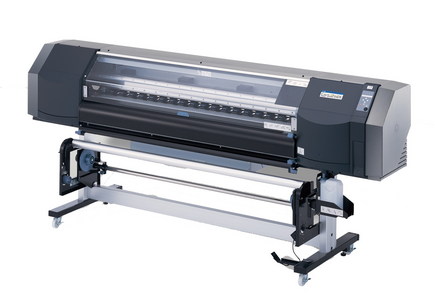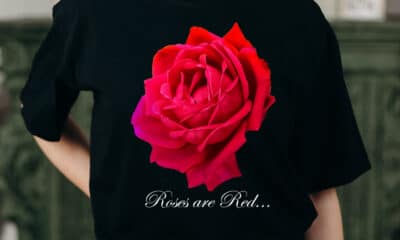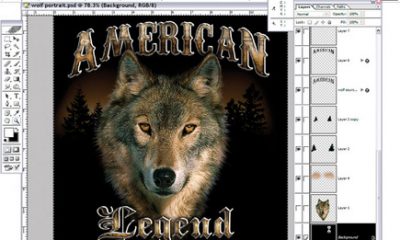Print buyers these days want more than just conventional signage. They require unique, attention-grabbing graphics and substrates that enhance visual impact. Fabric has become a material of choice for many of these applications, because it lends an assortment of desirable qualities to printed graphics. Digital dye-sublimation is typically seen as the perfect complement because of the vibrancy of the inks used in the process and the permanence of the bond they form with the fabric.
Digital dye-sub printers most often use water-based ink systems that are printed on a carrier paper and heat transferred to fabric. The high percentage of water in these inks converts to steam when heat-pressed, which interferes with the sublimation process—that of gaseous dyes penetrating the fibers of the fabric—and can lead to color loss. Therefore, conventional dye-sub prints must be free of residual moisture before transferring.
The need to purchase separate equipment to apply the necessary heat and pressure required to transfer graphics to the final fabric often prompts shops to explore direct-dye-sublimation printers. Besides being more expensive than transfer printers, these machines also require the use of more costly, specially coated media. Coated media is required to prevent the ink from spreading on the fabric before it sublimates, a condition that reduces image quality and edge definition.
Seiko I Infotech engineered its ColorTextiler 64DS to address these concerns and provide those who want to make fabric printing a profitable part of their business with a system that delivers color density, image quality, and efficient turnaround in applications such as pop-up banners, P-O-P signage, event graphics, theater backdrops, tablecloths, fabric walls, hanging graphics, flags, banners, apparel, promotional items, and more. The four-color, 64-in. (1625-mm) digital dye-sub-transfer printer is unique in that it uses oil-based dye-sub inks, which Seiko says prevents problems associated with water-based inks, such as steaming and paper cockling. Seiko also reports that its oil-based inks offer a 20-30% savings compared to six- and eight-color printers without sacrificing color quality, yield better color transfers, and create fewer airborne particles than water-based dye-sub inks.
The use of oil-based inks also enables operators to immediately transfer their graphics to a print-receptive fabric, such as uncoated polyesters and polyester blends, using a heat press. According to Seiko, users can choose from more than 75 different printable fabrics, from sheer materials to felt, as they explore unique and custom applications.
The ColorTextiler is equipped with four 256-nozzle, 14-pl Seiko IJ printheads. It supports a maximum print width of 63.5 in. (1613 mm). Users can select from three print modes: four passes at 360 dpi for speeds of 176 sq ft/hr (16.4 sq m/hr), six passes at 720 x 540 dpi for 110 sq ft/hr (10.2 sq m/hr), and eight passes at 720 dpi for 88 sq ft/hr (8.2 sq m/hr).
Seiko says the printer is compatible with most commercially available transfer papers and software RIPs. For more information, contact Seiko I Infotech Inc., a div. of Seiko Instruments USA, Inc., 2060 Wineridge Pl., Ste. A, Escondido, CA 92029, 760-781-5200, fax: 760-745-1195, e-mail: info@seiko-i.com, Web: www.seiko-i.com.

 Case Studies2 months ago
Case Studies2 months ago
 Art, Ad, or Alchemy2 months ago
Art, Ad, or Alchemy2 months ago
 Andy MacDougall2 months ago
Andy MacDougall2 months ago
 Columns3 weeks ago
Columns3 weeks ago
 Editor's Note2 weeks ago
Editor's Note2 weeks ago
 Marshall Atkinson3 weeks ago
Marshall Atkinson3 weeks ago
 Thomas Trimingham2 months ago
Thomas Trimingham2 months ago
 News & Trends2 months ago
News & Trends2 months ago








